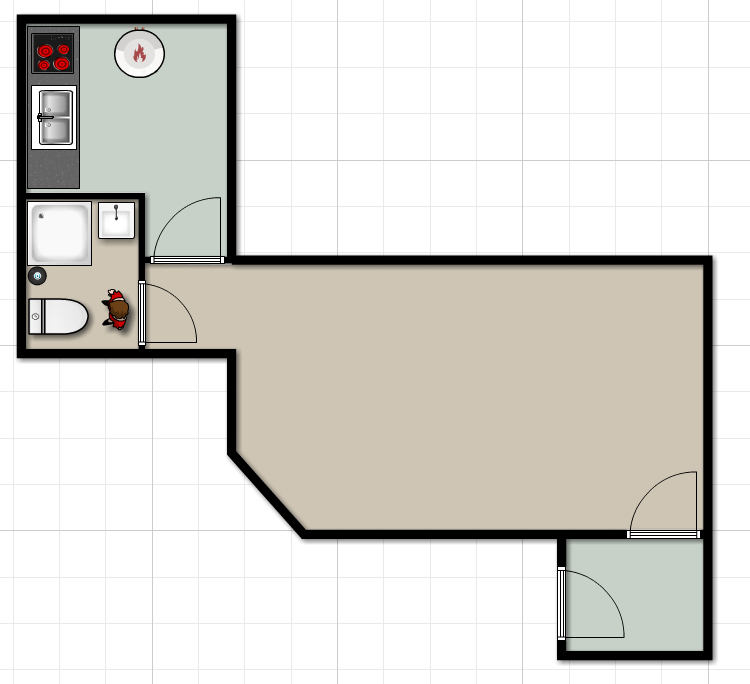Following the purchase of an apartment last year (studio + bathroom + separate kitchen)
We had the work done by a professional (supposedly, he disappeared
To my surprise, for the past few weeks, I have observed traces of humidity on the false ceiling of the bathroom.
Attached the plan of the apartment in question, I specify that the apartment is in double exposure, the kitchen and the living room is in southern exposure and the bathroom is in northern exposure.

3 weeks pass, mold spots appear .... I decide then I contact my neighbor above to warn her that there is a water leak.
And the, surprised, the neighbor has not been in her apartment for more than 1 month, I still manage to access her apartment (super nice neighbor) and re surprised .... there are no leaks that could come from her water points and drains, ditto for all copper plumbing (fully visible)
The only option for me is a condensation problem.
I then do my research on the internet (google is your best friend) I then equip myself with PTD1 and I notice then in the corner of the bathroom a gap of 2,5 ° between the middle of the wall and the top of the wall .

So I start to make an opening in the ultra humid false ceiling
And there water flows (not much) and it is possible that the condensation can make as much humidity?
I continue the dismantling of the false ceiling, I still get a little water on the head
I notice that the metallic structures of the false ceiling condenses the humidity
What is the solution to avoid these humidity problems? insulation?
Note that a hygro aerator already works in this room.


